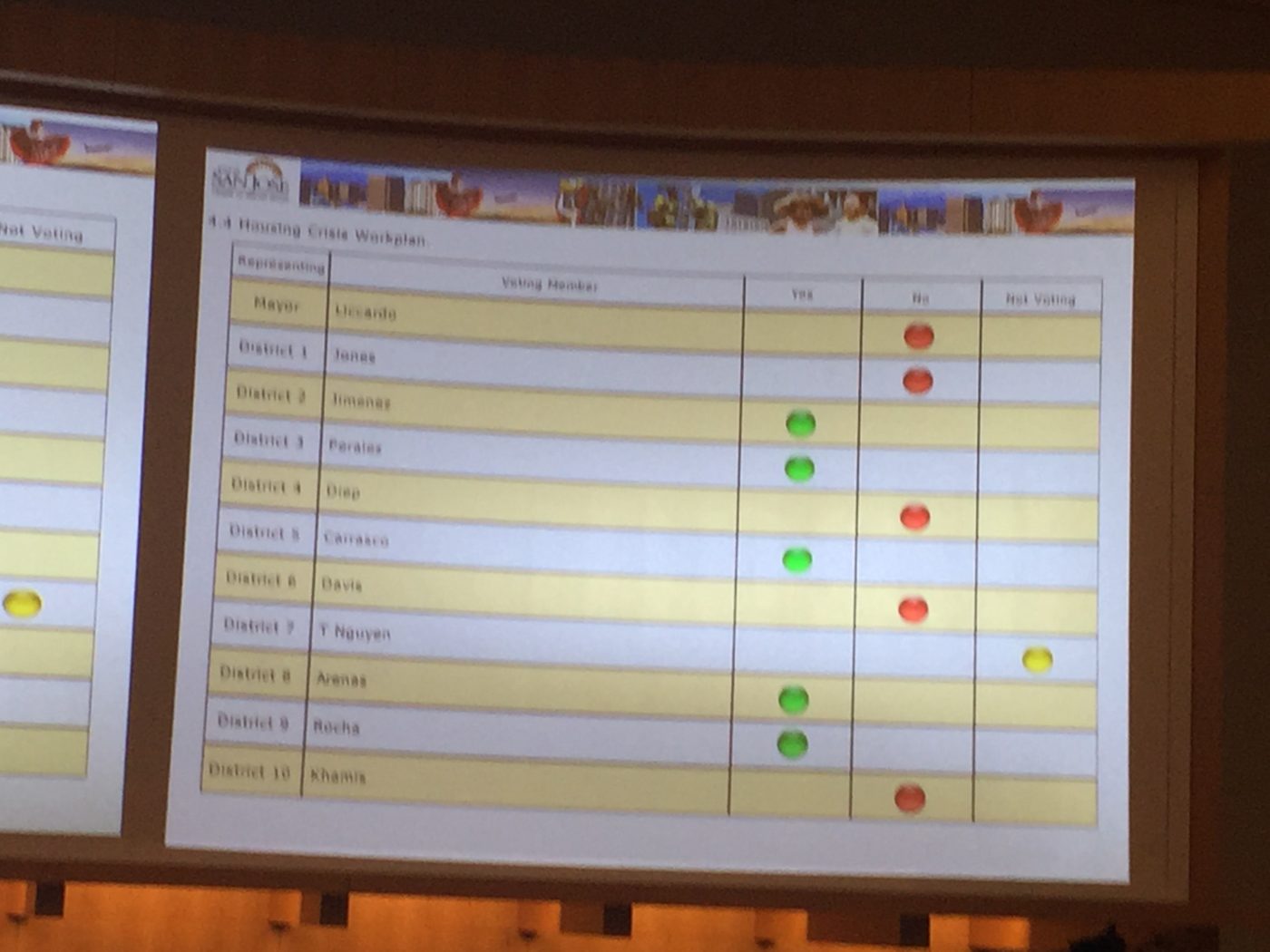At its June 12th meeting the San Jose City Council took a deep dive into the City’s housing crisis, forecasting the number of affordable homes that can be produced over the next five years with existing funding sources, and outlining a broad menu of proposals to spur both market rate and affordable housing development. By the end of the session, the council had approved perhaps its most comprehensive package of pro-housing actions.
However, the push to create a funding source to address the shortfall in funds for affordable homes fell short. After a long debate, and a dramatic 5-5 vote (with Councilmember Tam Nguyen absent), the council fell one vote short on a motion to conduct a Nexus Study to explore the viability of a Commercial Linkage Fee (CLF). The CLF has long been considered one of the few viable sources of significant local funding for affordable housing, and is a funding source that many neighboring jurisdictions already employ.
FY 2017/18 – FY 2021-22 Affordable Housing Investment Plan
The Affordable Housing Investment Plan (AHIP) lays out the plan for addressing the Council’s goal of creating 10,000 new affordable housing opportunities over a five-year period. The AHIP is submitted to Council every five years, and serves as a guiding policy document for the City’s Housing Department.
Staff presented the AHIP, which identified available funding sources currently available, outlined how the funds will be used, and provided a forecast of the number of affordable homes that can be produced given current City and partner efforts. The bottom line– with optimistic assumptions, and by leveraging every source of local, County, State, and federal funding available, the City will only produce 5,668 affordable homes towards the 10,000 unit goal. This shortfall of over 4,300 units is the reflection of a $541.5 million dollar gap in available funds. The Council discussed the CLF as a means of filling this gap (see more below).
SV@Home submitted two memos– one with a group called the Housing Leadership Group (HLG), assembled by the American Leadership Forum, and another with a coalition of housing partners. Both called for moving forward with the CLF Nexus Study, with the HLG memo additionally encouraging the City to reinstate a priority for extremely low-income (ELI) households and homeless families and individuals.
Staff did make the recommendation to reinstate the priority for extremely low-income (ELI) households and homeless families and individuals, in addition to priorities for leveraging City funding and project readiness. The Council took action to approve a stronger priority for ELI/homeless targeting than recommended by staff, prioritizing ELI units over leveraging and readiness.
Housing Crisis Workplan
The Housing Crisis Workplan was a companion document to the AHIP, and included a significant set of proposals to promote both market rate and affordable housing development. The Workplan, and a series of additional measures proposed by Mayor Liccardo in a separate memo, were unanimously adopted by the Council.
Some highlights of the proposals include:
- Creating a concierge service team to coordinate different departments involved in both market-rate and affordable developments
- Taking proactive steps to identify and make available more land for housing
- Amending the zoning code to remove barriers to 100% affordable projects.
- Studying the City’s requirements for ground-floor retail in affordable developments
- Developing an actionable policy response to widespread gentrification and displacement
- Identifying policies and programs that facilitate the development of housing for the “Missing Middle” – households that earn enough not to qualify for subsidy programs but still find themselves priced out of the market.
The Mayor also proposed polling to assess public support a $250 million bond expenditure on the November ballot, and further exploration of a regional approach to non-residential development fees for affordable housing.
Commercial Linkage Fee Nexus Study
Commercial Linkage Fees (CLF) are charged to developers of non-residential properties to partially mitigate the demand for affordable housing created by new workers. To establish any fee– including a CLF– State law requires that the City prepare a Nexus Study that documents the relationship, or nexus, between the projected employment and the need for affordable housing.
SV@Home urged the Council to move forward with a CLF Nexus Study, which was communicated through a coalition letter.
Councilmembers Rocha, Jimenez, and Peralez submitted memos calling for the City to move forward with a nexus study and a feasibility study, with the goal of having the data needed to determine the feasibility and level of a fee. Mayor Liccardo raised his opposition to moving forward with a nexus study and instead indicated that he is working on a proposal with the Metropolitan Transportation Commission that would create a regional jobs-housing imbalance impact fee.
After a spirited debate, with supporters arguing that it was time that San Jose joined other cities in the county in requiring that commercial developers contribute to the housing crisis in the same way that housing developers do, and detractors arguing that any fees would scare away development, the council vote was called. With five members voting yes and five voting no, there was not a majority in support and the motion to move forward with the studies was defeated.
We’ve been through this before, and this vote will not deter SV@Home in its efforts. We know that there are insufficient resources available to meet the City’s housing need. Per the City’s own Housing Investment Plan, there is a more than $500 million gap to produce 10,000 new homes in five years (a number that is far short of the actual need).
We do appreciate the other funding suggestions floated by the Mayor, and will be reviewing ideas for a regional impact fee, the possibility of integrating housing into a bond proposal sponsored by the City for the November ballot, and a possible vacant building fee.
